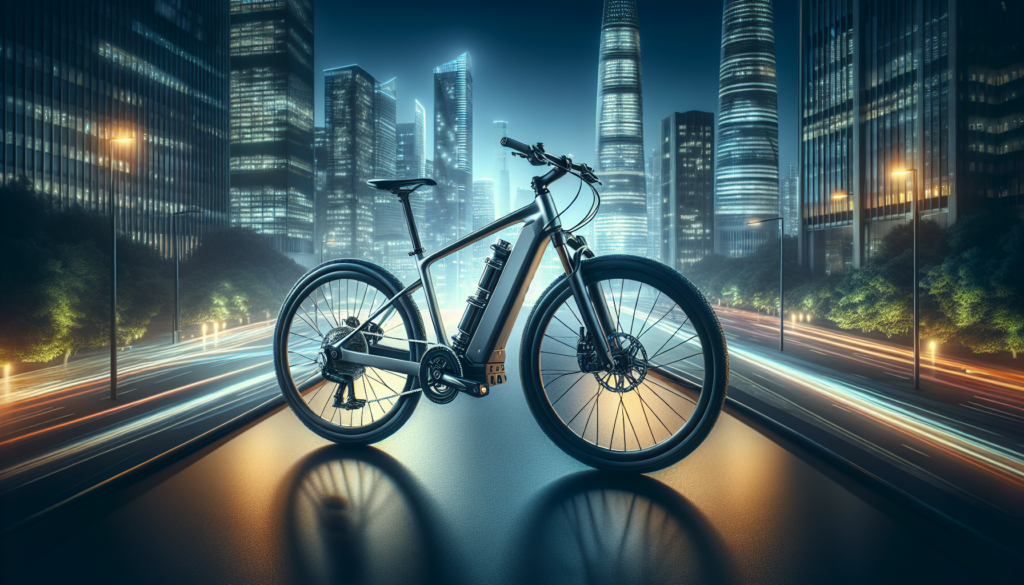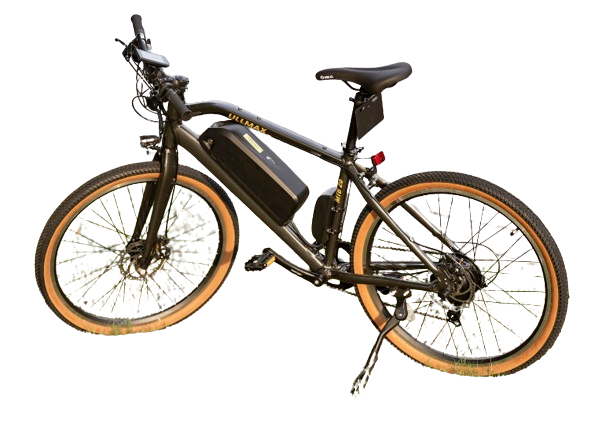In recent years, the popularity of electric scooters and e-bikes has surged, offering eco-friendly alternatives to traditional modes of transportation. Many commuters and leisure riders are now faced with the question: should I opt for an electric scooter or an e-bike? While both options provide convenience and fun, understanding their key differences can help you make an informed choice that best suits your needs. In this blog, we will delve into the distinct features, advantages, and considerations of electric scooters and e-bikes, allowing you to navigate through the exciting world of electric mobility with confidence.
Overview of Electric Scooters
Electric scooters have risen in popularity as an efficient and convenient mode of urban transportation. These lightweight, two-wheeled vehicles are powered by electric motors, allowing users to zip through city streets effortlessly. Electric scooters typically feature a platform for the rider to stand on, handlebars for steering, and a simple throttle system for acceleration. They are often foldable, making them an excellent choice for commuters who need to combine different forms of transportation, like trains or buses, into their daily journeys. The ease of use and quick learning curve makes electric scooters ideal for people of all ages, and their compact design facilitates easy parking and storage.
An electric scooter can be an accessible option for those looking to bypass traffic congestion while also lowering their carbon footprint. They come in various models with differing power outputs, allowing riders to choose a scooter that suits their preferences and needs. Some scooters even feature a range of smart technologies, such as GPS tracking and app connectivity, enhancing the overall riding experience. As cities work towards becoming more environment-friendly, electric scooters serve as a great alternative to traditional gas-powered vehicles, making them a popular choice for short-distance travel or commuting.

Overview of E-Bikes
Ebikes, or electric bicycles, are an innovative blend of traditional cycling and modern electric technology. They are equipped with a motor that assists the rider while pedaling, making it easier to tackle hills and longer distances. Generally, ebikes have a pedal-assist feature, which means the motor provides power only when the rider is pedaling, allowing for a more bike-like riding experience. This design promotes exercise while reducing the fatigue often faced during traditional biking. Ebikes are available in various styles, including commuter models, mountain bikes, and folding variants, catering to a wide range of user preferences and riding conditions.
The key components of an ebike include the electric motor, battery, and controller. The motor is usually integrated into the wheel hub or located at the bike’s crankset, while the battery varies in size and capacity to support different ranges and speeds. Riders can often customize their experience by choosing different levels of assistance, enhancing both performance and comfort. In addition, ebikes tend to have a higher weight capacity compared to traditional bicycles, accommodating a broader demographic of users. Overall, ebikes offer an efficient and environmentally friendly mode of transportation that can significantly reduce commuting times and promote a healthier lifestyle.

Key Specifications: Speed and Range Comparison
When considering electric scooters and ebikes, speed and range are critical specifications that distinctly differentiate the two modes of transportation. Typically, electric scooters have a top speed ranging from 15 to 25 km/hr, making them ideal for short commutes and urban environments. They are designed for quick trips, often boasting lightweight frames that enhance agility and ease of maneuverability in crowded areas. Ebikes, on the other hand, can reach speeds of up to 25km/hr or more (overseas model), thanks to more powerful motors and a design that accommodates longer rides. This additional speed can be particularly advantageous for those looking to cover greater distances in a shorter time, without breaking a sweat in the process.
In terms of range, electric scooters generally offer between 20 to 40 km on a single charge, which is suitable for daily urban travel and errands. Ebikes, with their larger battery capacities and more efficient energy usage, can achieve ranges upwards of 100 km, depending on battery size and rider preference for pedal-assist modes. This extended range provides the flexibility for longer commutes or leisurely rides without the frequent need to recharge. Understanding these key specifications not only helps potential riders make informed choices but also highlights the functional strengths each option offers in their respective niches.
Design and Build: How They Differ
When comparing electric scooters and ebikes, one of the most noticeable differences lies in their design and build. Electric scooters are typically characterized by their minimalist frame and flat platform, which allows riders to stand while navigating through urban environments. They usually feature smaller wheels, making them lightweight and portable, ideal for short commutes and quick errands. In contrast, e-bikes come equipped with a more traditional bicycle frame, complete with a seat and typically larger wheels for enhanced stability and comfort. Their design allows for a more relaxed riding position, which can be particularly beneficial for longer journeys or mixed terrains.
Moreover, the build quality of ebikes tends to be sturdier due to the need to support a rider’s weight over longer distances, often incorporating robust components essential for cycling. Many ebikes also feature gears, suspension systems, and additional accessories, such as racks and lights, enhancing their versatility for various riding conditions. Electric scooters, while simpler, are usually designed for quick, urban travel and may lack some of the additional features found in ebikes. This distinction not only affects the feel and usability of these vehicles but also plays a vital role in determining which option best suits an individual’s commuting needs.

Usage Scenarios: When to Choose Which
When considering the usage scenarios for electric scooters and ebikes, it’s essential to evaluate the intended purpose of your journey. Electric scooters are often favored for short commutes, quick errands, or urban travel where ease of maneuverability and parking is a priority. They’re lightweight, portable, and can be folded for convenient storage, making them an ideal choice for users who navigate congested city streets or require a last-mile solution after taking public transport. Additionally, electric scooters are typically designed for use on smooth surfaces rather than rugged terrains, limiting their application to more urban environments.
Conversely, e-bikes offer greater versatility and are suited for longer rides or varied terrains, including hills and trails. They provide a more comfortable riding experience thanks to their larger frame and seat, allowing for extended cycling without much physical strain. An e-bike might be the better option for commuting longer distances or taking leisurely rides through scenic landscapes. Given their sturdiness and ability to handle different road conditions, e-bikes work well for outdoor enthusiasts who blend commuting with recreational cycling. Ultimately, the decision hinges on factors such as distance, comfort, and the type of terrain you’ll be navigating.
Legal Regulations and Licensing for Each
When it comes to legal regulations, electric scooters and ebikes often fall under different laws in many jurisdictions. Electric scooters are frequently classified as a type of personal mobility device, which can mean that riders may not be required to have a driver’s license, insurance, or even registration depending on local laws. However, cities and states may impose specific laws about where scooters can be ridden, their maximum speed, and age requirements for riders.
Understanding these regulations is crucial for anyone considering using an electric scooter, as violations can lead to fines or confiscation of the device. On the other hand, e-bikes generally have stricter regulations due to their similarity to bicycles and the higher speeds they can achieve. In many places, e-bikes often require riders to wear helmets, and certain models may need to be registered. Licensing requirements can also vary; some areas may enforce licensing for e-bikes that function similarly to motorcycles. Therefore, it is essential for users to familiarize themselves with the laws governing electric scooters and e-bikes in their specific area to ensure safe and legal riding practices.
Cost Comparison: Initial Investment and Maintenance
When considering the cost comparison between electric scooters and e-bikes, it’s essential to look at both initial investment and ongoing maintenance expenses. Typically, electric scooters are less expensive than e-bikes, with average price points ranging from $800 to $1,500, depending on features and build quality. E-bikes, on the other hand, can start around $1,000 and go up to $5,000 or more for high-end models. This initial cost can be a significant deciding factor for potential buyers. Additionally, scooters tend to require less costly components for repairs, making them budget-friendly for those who do not want to invest heavily upfront.
The purchase of accessories like helmets and locks should also be factored in as part of the overall investment for both options. In terms of maintenance, electric scooters generally require minimal upkeep, often needing only occasional tire checks or battery maintenance. E-bikes, while still fairly low-maintenance, may require more frequent servicing due to their complex components such as derailleurs and chain systems. This difference can lead to variable ongoing costs for users. Overall, while the initial investment in an e-bike may be higher, the long-term maintenance costs could balance the equation depending on usage and care. Thus, evaluating your budget and maintenance preferences is crucial when choosing between an electric scooter and an e-bike.
Final Thoughts on Electric Scooters and E-Bikes
In conclusion, while both electric scooters and ebikes offer convenient and eco-friendly alternatives for urban commuting, they cater to different preferences and needs. Electric scooters are typically more compact and portable, making them ideal for short trips and easy storage. On the other hand, ebikes provide a more robust riding experience, suitable for longer distances and varied terrains.
Consumers should assess their personal travel habits, lifestyle, and budget when deciding between the two options. Ultimately, understanding the key differences between electric scooters and ebikes can help potential buyers make informed decisions. Whether you prioritize portability with an electric scooter or the endurance of an ebike, both modes of transport contribute to a sustainable future. Choose the one that aligns best with your commuting needs and enjoy the ride towards a greener lifestyle.
I think it’s great that the blog covers the usage scenarios, as it really helps potential riders understand whether e-bikes or electric scooters are more suited to their lifestyle. The comparison of costs is also very useful.
Thank you so much for your kind words about our blog post, Lakshmi! We’re glad you found the usage scenarios and cost comparison helpful in making an informed decision between e-bikes and electric scooters. At Eko Life, we strive to provide our readers with accurate and comprehensive information to help them choose the best option for their needs. If you have any further questions or would like to know more about our e-mobility products, please don’t hesitate to reach out to us at [email protected] or +65 6589 8877. We’re looking forward to serving you better!
As a commuter, I was thinking of getting an e-bike. But the blog made me realize that electric scooters are more suitable for my short commute. This is a great resource for anyone trying to decide between the two.
Thank you for your comment, Kavin! We’re glad to hear that our blog post has helped you make a more informed decision about choosing between electric scooters and e-bikes. If you have any further questions or need any assistance with selecting the right e-bike for your needs, feel free to contact us at [email protected] or call us at +65 6589 8877.
I found this comparison very informative and helped me understand the pros and cons of electric scooters and e-bikes. I think the blog did a great job highlighting their key differences.
Hello Yusri Eswaran, thanks for taking the time to read our blog post on the differences between electric scooters and e-bikes. We’re glad to hear that it was helpful in providing you with a better understanding of their pros and cons. If you have any further questions or clarifications regarding e-mobility in Singapore, Malaysia, or Indonesia, please don’t hesitate to reach out to us at [email protected] or call us at +65 6589 8877. We’d be more than happy to assist you.